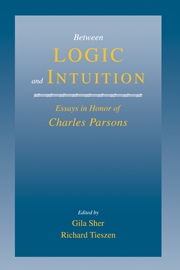Book contents
Challenges to Predicative Foundations of Arithmetic
Published online by Cambridge University Press: 02 December 2009
Summary
The White Rabbit put on his spectacles. “Where shall I begin, please your Majesty?” he asked. “Begin at the beginning,” the King said gravely, “and go on till you come to the end: then stop.”
Lewis Carroll, Alice in WonderlandThis is a sequel to our article “Predicative foundations of arithmetic” (Feferman and Hellman, 1995), referred to in the following as PFA; here we review and clarify what was accomplished in PFA, present some improvements and extensions, and respond to several challenges. The classic challenge to a program of the sort exemplified by PFA was issued by Charles Parsons in a 1983 paper, subsequently revised and expanded as Parsons (1992). Another critique is due to Daniel Isaacson (1987). Most recently, Alexander George and Daniel Velleman (1996) have examined PFA closely in the context of a general discussion of different philosophical approaches to the foundations of arithmetic.
The plan of the present paper is as follows: Section I reviews the notions and results of PFA, in a bit less formal terms than there and without the supporting proofs, and presents an improvement communicated to us by Peter Aczel. Then, Section II elaborates on the structuralist perspective that guided PFA. It is in Section III that we take up the challenge of Parsons. Finally, Section IV deals with the challenges of George and Velleman, and thereby, that of Isaacson as well. The paper concludes with an Appendix by Geoffrey Hellman, which verifies the predicativity, in the sense of PFA, of a suggestion credited to Michael Dummett for another definition of the natural number concept.
- Type
- Chapter
- Information
- Between Logic and IntuitionEssays in Honor of Charles Parsons, pp. 317 - 338Publisher: Cambridge University PressPrint publication year: 2000
- 4
- Cited by



